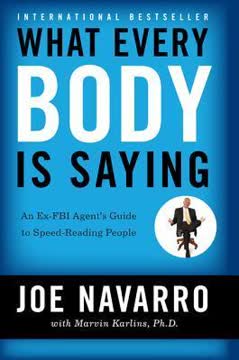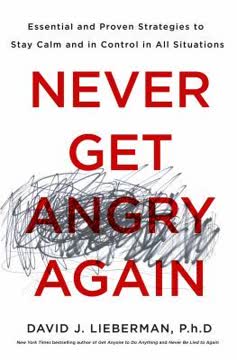重点摘要
1. 分析行为模式以揭示动机并预测行动
“要理解人们为何如此行为,我们需要审视这种行为的原因和驱动因素:他们的动机。”
潜在动机。 人类行为受到复杂的心理、社会和生物因素的驱动。通过理解这些动机,我们可以更好地预测和解读行为。关键的动机理论包括:
- 快乐原则:人们追求快乐,避免痛苦
- 马斯洛需求层次理论:生理、安全、爱/归属、尊重、自我实现
- 防御机制:人们保护自我和自尊的方式
实际应用。 分析动机的方法:
- 观察行为模式随时间的变化
- 寻找陈述意图与实际行为之间的差异
- 考虑过去的经历和信念如何影响当前选择
- 确定个人通过行为试图满足哪些需求
2. 观察面部表情和身体语言以获取更深层次的洞察
“身体不会说谎!”
微表情。 这些短暂的、不自主的面部表情可以揭示隐藏的情感:
- 快乐:颊部上扬,嘴角上翘
- 悲伤:外眼角和嘴角下垂
- 愤怒:眉头紧锁,眼睛和嘴唇紧绷
- 恐惧:眉毛上扬,眼睛睁大,嘴巴紧闭
- 惊讶:眉毛抬高,眼睛睁大,嘴巴张开
身体语言提示。 非语言交流提供了宝贵的信息:
- 姿势:开放和扩展与封闭和保护
- 手势:安抚行为表明压力或不适
- 眼神接触:程度和持续时间可以传达兴趣或欺骗
- 亲密距离:个人空间的使用揭示舒适程度
记得考虑行为的聚合和上下文,而不是孤立的手势,以获得更准确的解读。
3. 识别个性类型以更好地理解个人特征
“个性可以被视为长期行为的持续模式。”
个性模型。 几种框架帮助分类个性特征:
-
大五人格(OCEAN):
- 开放性
- 责任心
- 外向性
- 宜人性
- 神经质
-
迈尔斯-布里格斯性格指标(MBTI):
- 外向/内向
- 感知/直觉
- 思考/情感
- 判断/知觉
-
九型人格:基于核心动机的九种独特个性类型
应用。 虽然没有个体完全符合单一类别,但理解这些模型可以提供:
- 行为倾向的洞察
- 改进的沟通策略
- 更好的反应和偏好的预测
- 增强的同理心和关系建立
4. 通过关注对话动态和认知负荷来识别欺骗
“识别谎言不仅仅是像鹰一样盯着面部抽动或出汗的手掌。它是关于与整个对话的互动。”
对话策略:
- 使用开放式问题以鼓励详细回答
- 保留信息以便发现潜在矛盾
- 提出意外问题以打乱准备好的叙述
- 观察自信心、言语模式和身体语言的变化
认知负荷指标:
- 增加的停顿和犹豫
- 难以提供具体细节
- 情感表达的不一致
- 难以回答简单问题或执行基本任务
记住,没有单一行为可以明确指示欺骗。寻找行为提示的聚合,并考虑上下文和基线行为。
5. 使用薄片切割技术进行快速、准确的评估
“薄片切割是指仅使用非常少量的数据,即你试图观察的现象的‘薄片’,来发现模式——在我们的案例中,是一个人及其行为。”
第一印象的力量。 研究表明,几秒钟内做出的初步判断可能出奇准确。薄片切割的关键方面:
- 依赖于对信息的无意识处理
- 在某些情况下可以超越更深思熟虑的分析
- 在基于相关的高质量数据时效果最佳
实际应用:
- 信任你的初步直觉
- 观察具体的、相关的行为
- 寻找模式而非孤立事件
- 考虑上下文和潜在偏见
- 将薄片切割作为进一步调查的起点
将直觉评估与有意识的分析结合,以更全面地理解个体。
6. 解读用词和语言模式以获取个性线索
“我们的用词选择反映了我们更深层的价值观、个性、偏见、期望、信念和态度。”
语言分析。 注意:
- 代词使用:“我”与“我们”表明自我关注或群体导向
- 情感语言:积极或消极的词汇揭示观点
- 具体性:具体与抽象语言显示思维风格
- 行话:不必要的复杂性可能表明不安全感
- 隐喻:揭示潜在的思维模式和世界观
实用技巧:
- 注意重复的短语或主题
- 记录言语中的正式程度或随意性
- 观察语言在不同上下文中的变化
- 考虑文化和教育对语言使用的影响
记住,用词选择只是拼图的一部分;始终与其他行为线索结合解读。
7. 检查个人空间和物品作为身份的延伸
“把家视为人们在世界上感到最舒适、安全和真实的地方。”
环境心理学。 个人空间和物品揭示:
- 价值观和优先事项
- 个性特征
- 理想和自我形象
- 文化和社会影响
关键观察领域:
- 家居装饰:
- 风格(传统、现代、折衷)
- 整理程度
- 个人化元素(照片、艺术品、纪念品)
- 工作空间:
- 桌面布置
- 展示的个人物品
- 技术选择
- 服装和配饰:
- 风格和品牌偏好
- 维护和照顾的程度
- 象征性或有意义的物品
考虑物品的存在与缺失,以及空间的使用和维护方式。
8. 利用社交媒体和在线行为获取个性洞察
“人们在社交媒体上更有可能展示真实的自我,而非理想化的自我。”
数字足迹。 在线行为可以揭示:
- 个性特征(例如,外向性、开放性)
- 价值观和兴趣
- 社交联系和影响力
- 沟通风格
分析技术:
- 内容分析:
- 帖子的主题和主题
- 活动的频率和时机
- 分享的媒体类型(文本、照片、视频)
- 网络分析:
- 社交联系的规模和多样性
- 与他人的互动模式
- 语言分析:
- 用词和语气
- 表情符号和缩写的使用
- 视觉分析:
- 头像和自拍
- 分享的图像类型
记得在解读在线行为时考虑平台特定的规范和潜在的自我审查。
9. 运用战略性提问揭示价值观和优先事项
“通过无辜的提问,我们可以揭示代表整个世界观或价值观的一系列信息。”
间接提问技巧:
- 询问抱负和恐惧
- 询问消费习惯和资源分配
- 探讨重要成就和失望
- 讨论轻松与挑战性的活动
- 提出假设情境
示例问题:
- “你最想努力争取什么奖项,最想避免什么惩罚?”
- “你希望在哪些方面花钱,而在哪些方面你愿意节省或跳过?”
- “如果你可以设计一个游戏角色,你会强调哪些特征,忽略哪些特征?”
分析回答中的潜在情感、动机和价值观,而不是仅仅表面理解。
10. 整合多种观察技术以获得全面理解
“解读他人就是解读行为模式。”
综合分析。 结合多种方法:
- 行为观察
- 非语言沟通分析
- 个性评估
- 语言分析
- 环境解读
- 社交媒体评估
- 战略性提问
关键原则:
- 寻找不同上下文中的一致模式
- 考虑文化、情境和个体因素
- 保持开放态度,避免过早判断
- 认识到任何单一观察技术的局限性
- 不断完善和更新你的评估
通过整合多种方法,你可以更细致、准确地理解个体,从而改善沟通、同理心和关系建立。
最后更新日期:
FAQ
What's "Read People Like a Book" about?
- Understanding Human Behavior: The book by Patrick King focuses on analyzing, understanding, and predicting people's emotions, thoughts, intentions, and behaviors.
- Skill Development: It emphasizes that reading people is a skill that can be learned and mastered, similar to emotional intelligence or social awareness.
- Practical Applications: The book provides practical techniques for improving communication, detecting deception, and understanding motivations, which can be applied in personal and professional interactions.
Why should I read "Read People Like a Book"?
- Enhance Social Skills: The book offers insights into improving your ability to read and understand people, which can enhance your social interactions and relationships.
- Detect Deception: It provides techniques for identifying when someone is lying or manipulating, which can be valuable in both personal and professional settings.
- Self-Improvement: By understanding others better, you also gain insights into your own behaviors and motivations, leading to personal growth.
What are the key takeaways of "Read People Like a Book"?
- Motivation and Behavior: Understanding the motivations behind people's actions is crucial for predicting behavior.
- Non-Verbal Cues: Facial expressions and body language are powerful tools for reading people, but they must be considered in context.
- Personality Insights: Personality tests like the Big Five and MBTI can provide frameworks for understanding individual differences.
How does Patrick King suggest we analyze motivations in people?
- Pleasure and Pain Principle: People are motivated by the desire to seek pleasure and avoid pain, which can predict their behavior.
- Maslow's Hierarchy of Needs: Understanding where someone is on this hierarchy can reveal their current motivations and needs.
- Defense Mechanisms: Recognizing how people protect their ego can provide insights into their true motivations and fears.
What techniques does "Read People Like a Book" offer for reading body language?
- Microexpressions: These are quick, involuntary facial expressions that reveal true emotions, even when someone is trying to hide them.
- Body Language Clusters: Observing clusters of body language cues, rather than isolated gestures, provides a more accurate reading.
- Contextual Interpretation: Always consider the context and establish a baseline of normal behavior to accurately interpret body language.
How can personality tests help in understanding people according to Patrick King?
- Big Five Traits: These traits (openness, conscientiousness, extroversion, agreeableness, neuroticism) provide a framework for understanding personality.
- MBTI and Keirsey Temperaments: These tools categorize personality types, offering insights into how people perceive and interact with the world.
- Enneagram Types: This model focuses on motivations and fears, providing a deeper understanding of individual behavior patterns.
What are the challenges in detecting lies as discussed in "Read People Like a Book"?
- Unreliable Cues: Common beliefs about lying cues, like avoiding eye contact, are not always reliable indicators of deception.
- Conversational Techniques: Effective lie detection involves strategic questioning and observing inconsistencies in stories.
- Cognitive Load: Increasing cognitive load on a liar can lead to mistakes and reveal deception.
How does Patrick King recommend using observation to understand people quickly?
- Thin Slicing: This involves making quick judgments based on small amounts of information, which can be surprisingly accurate.
- Smart Observations: Focus on word choice, body language, and context to gather meaningful insights.
- Holistic Approach: Consider all available data, including non-verbal cues and environmental factors, for a comprehensive understanding.
What role do indirect questions play in analyzing people?
- Revealing Values: Indirect questions can uncover a person's values and priorities without them realizing it.
- Behavioral Insights: These questions focus on behaviors and preferences, providing concrete data for analysis.
- Avoiding Defensiveness: Indirect questions can bypass defenses, leading to more honest and revealing answers.
What are some practical applications of the techniques in "Read People Like a Book"?
- Improved Communication: By understanding others better, you can tailor your communication style to be more effective.
- Conflict Resolution: Recognizing motivations and emotions can help in resolving conflicts and building stronger relationships.
- Professional Success: These skills can enhance your ability to negotiate, lead, and collaborate in the workplace.
What are the best quotes from "Read People Like a Book" and what do they mean?
- "Reading and analyzing people is no doubt a valuable skill to have." This emphasizes the importance of understanding others for successful interactions.
- "The body doesn’t lie!" Highlights the significance of non-verbal cues in revealing true emotions and intentions.
- "Our goal in learning to fine-tune our capacity to analyze people is to make best guesses." Suggests that while we can never be certain, informed guesses can greatly improve our understanding of others.
How can "Read People Like a Book" help in personal growth?
- Self-Reflection: By learning to read others, you also gain insights into your own behaviors and motivations.
- Bias Awareness: The book encourages recognizing and overcoming personal biases for more accurate assessments.
- Emotional Intelligence: Developing these skills can enhance your emotional intelligence, leading to better relationships and personal fulfillment.
评论
《像书一样读懂人》获得了褒贬不一的评价,平均评分为3.46/5。许多读者认为这本书表面化且缺乏深度,内容大多是常识性的信息。一些读者欣赏书中关于身体语言和心理学的见解,而另一些人则批评其刻板印象和缺乏科学依据。这本书被描述为易于阅读,但排版较差。正面的评价强调它在提升社交智力方面的实用性,而负面的评价则认为它更适合那些缺乏社交意识或寻求操控技巧的人。
Similar Books























